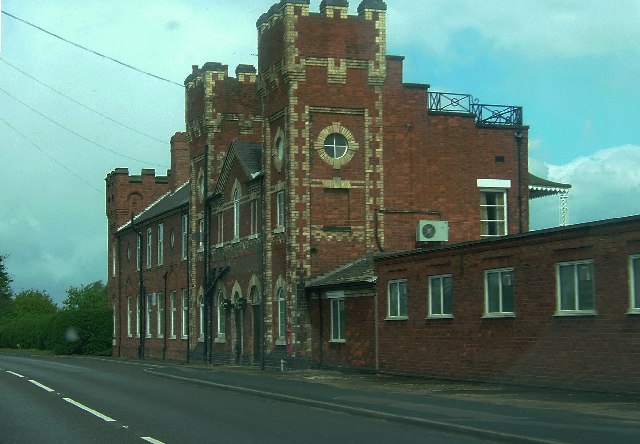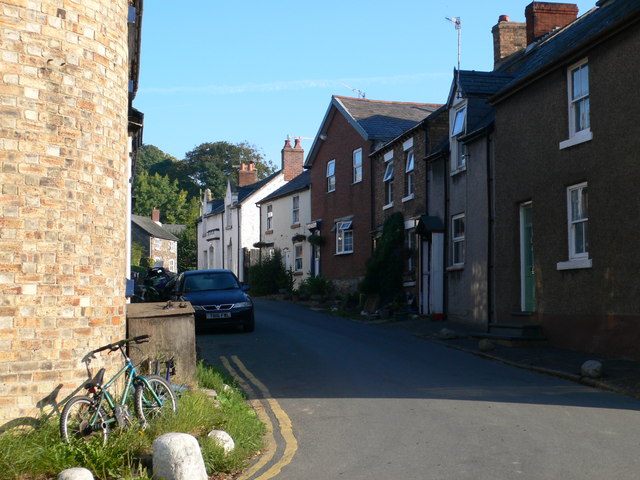|
Defence Training Estate
Defence Training Estates is an organisation within the United Kingdom Ministry of Defence. It is the operating division of the Defence Infrastructure Organisation, and is responsible for the management of the 78% of the defence estate allocated as Training Areas and Ranges. It provides sufficient and suitable estate to support the training requirements of the British Armed Forces, whilst ensuring environmental management and appropriate historical and archaeological preservation. Structure and partners The organisation is headquartered at Waterloo Lines, Warminster' and has a number of regional headquarters responsible for the management of the training estate on a regional basis. DTE works with nature conservation bodies to safeguard designated sites and protected species within the estate. These bodies include the Joint Nature Conservation Committee, Natural England, Scottish Natural Heritage, the Countryside Council for Wales and the Northern Ireland Environment Agency. So ... [...More Info...] [...Related Items...] OR: [Wikipedia] [Google] [Baidu] |
United Kingdom
The United Kingdom of Great Britain and Northern Ireland, commonly known as the United Kingdom (UK) or Britain, is a country in Europe, off the north-western coast of the continental mainland. It comprises England, Scotland, Wales and Northern Ireland. The United Kingdom includes the island of Great Britain, the north-eastern part of the island of Ireland, and many smaller islands within the British Isles. Northern Ireland shares a land border with the Republic of Ireland; otherwise, the United Kingdom is surrounded by the Atlantic Ocean, the North Sea, the English Channel, the Celtic Sea and the Irish Sea. The total area of the United Kingdom is , with an estimated 2020 population of more than 67 million people. The United Kingdom has evolved from a series of annexations, unions and separations of constituent countries over several hundred years. The Treaty of Union between the Kingdom of England (which included Wales, annexed in 1542) and the Kingdom of ... [...More Info...] [...Related Items...] OR: [Wikipedia] [Google] [Baidu] |
RAF Wainfleet
RAF Wainfleet was a Royal Air Force weapons range on The Wash on the east coast of England near Wainfleet, in the civil parish of Friskney, although the north-east part of the range was in Wainfleet St Mary. Other ranges nearby include RAF Holbeach, also on The Wash, and RAF Donna Nook. It was also known as The Wash (North side) Bombing Range. It was only a few miles south-west of Gibraltar Point. History The range opened to aerial operations in August 1938; but had previously been used as a range from 1890 by the 1st Lincolnshire Artillery. However, there is evidence that the area was in use for military practice as far back as Napoleonic times when the River Steeping was navigable and Wainfleet itself was an important harbour. During the 1920s and 1930s it was also used by the RAF and Royal Artillery. Thrangewas administered by RAF Coningsby as an Air Weapons Range within RAF Strike Command. During the Second World War, it was used by 617 Squadron to test the Stabilizin ... [...More Info...] [...Related Items...] OR: [Wikipedia] [Google] [Baidu] |
Pontrilas Army Training Area
Pontrilas Army Training Area is a British Army training camp, located just north of the village of Ewyas Harold near to Pontrilas in Herefordshire, England. Originally developed pre- World War II by the Ministry of Defence (MoD) as an ammunition dump, it was served by the Golden Valley Railway. History During the 1930s, there was a recognition of a need to provide secure storage for munitions within the United Kingdom. The proposal was to create three central ammunition depots (CAD): one in the south (Monkton Farleigh); one in the north of England (Longtown, Cumbria); and one in the Midlands (Nesscliffe). Beyond these, a series of sub-depots was created by the MoD in the area, to allow further distribution. Each was connected to the national rail network, and was laid out over an extensive area to avoid total destruction should an accidental explosion occur, or the site be attacked by an enemy. Named Elm Bridge, the servicing railway branch line was just before Abbeydore railwa ... [...More Info...] [...Related Items...] OR: [Wikipedia] [Google] [Baidu] |
DMS Whittington
DMS Whittington, otherwise known as Defence Medical Services Whittington (formerly Whittington Barracks), is a military base in Whittington, Staffordshire, near Lichfield in England. It is home to the Staffordshire Regiment Museum, the Headquarters of the Surgeon General and subordinate medical headquarters, and the location of the Defence College of Health Education and Training. Early history The barracks were constructed on Whittington Heath. The heath had been the site of the Lichfield races which had moved from Fradley in 1702. During the 18th century they were one of the largest and well attended race meetings in the Midlands and in 1773 a grandstand was erected near the Lichfield- Tamworth Road. However, during the 19th century the popularity of the races dwindled, and military use of the heath grew. The War Office approached the Marquess of Anglesey in 1875 to buy the heath for the building of a barracks. Construction started in 1877 and the formal handing over of the n ... [...More Info...] [...Related Items...] OR: [Wikipedia] [Google] [Baidu] |
Llansilin Rifle Ranges
Llansilin () is a village and local government community in Montgomeryshire, Powys, Wales, west of Oswestry. The community, which includes Llansilin village, a large rural area and the hamlets of Moelfre and Rhiwlas as well as the remote parish of Llangadwaladr, had a population of 648 at the 2001 census,Llansilin Community Office of National Statistics increasing to 698 at the 2011 Census. There is also an electoral ward including the nearby village of with a population of 2,295. Landscape [...More Info...] [...Related Items...] OR: [Wikipedia] [Google] [Baidu] |
MoD Sealand
MoD Sealand (formerly RAF Sealand), is a Ministry of Defence installation in Flintshire, in the northeast corner of Wales, close to the border with England. It is a former Royal Air Force station, active between 1916 and 2006. Under defence cuts announced in 2004 RAF Sealand was completely closed in April 2006. All remaining RAF units were moved to RAF Leeming, and the site is now operated as a tri-service MoD installation. Early history Clwyd-Powys Archaeological Trust says the site is nationally important as it became home in 1916 to a flying school which, during World War I, was requisitioned by the War Office becoming RAF Sealand in 1924. The report said: "The site of the former Dutton's Flying School is an incredibly important historical location, effectively the origin point of the initial Royal Flying Corps and later RAF as a fighting force. "The degree to which any traces of Dutton's aerodrome survive as sub-surface deposits is currently unknown as there have been ... [...More Info...] [...Related Items...] OR: [Wikipedia] [Google] [Baidu] |
Gamecock Barracks
Gamecock Barracks is a military installation located at Bramcote, south-east of Nuneaton in Warwickshire. History The barracks were established, on the site of the former RAF Bramcote airbase, in 1959: it was called after HMS Gamecock, the name of the naval unit based at the site before the British Army took it over. The Barracks were home to the Junior Leaders' Regiment Royal Artillery, between the 1960s and the 1990s. This was an Army training establishment for the future non-commissioned officers of the Royal Artillery. It was one of many different types of Junior establishments for soldiers serving from the age of 15 to 17 years (until the school leaving age was raised to 16). After completing their military and trade training, which initially took two years, but was latterly reduced to 12 months, they would muster to their designated Regular Army Artillery Regiments. Current Use Since 1993 the barracks have been occupied by 30 Signal Regiment. Future Use In November ... [...More Info...] [...Related Items...] OR: [Wikipedia] [Google] [Baidu] |
Kinmel Park Training Area
Kinmel Park Training Area is an army training ground in what was once the grounds of Kinmel Hall, near Abergele, in Conwy county borough, Wales. The camp was built in 1915 to train troops during the First World War and was later used to house troops at the end of the conflict. A riot broke out in the camp among Canadian forces in 1919, leading to the deaths of several soldiers. The camp was downscaled after the war, being reduced to around half of its original size. History Kinmel Camp was built in 1915, during the First World War, as a military training camp. The camp was built in a valley between two hills, Engine Hill and Primrose Hill south of the village of Bodelwyddan. The site was largely empty prior to the camp's construction with the only man made structures in close proximity being abandoned mining buildings. At the time of its construction, it was the largest army camp in Wales. The site of the camp was around by . Local residents set up small shops nearby, known as ... [...More Info...] [...Related Items...] OR: [Wikipedia] [Google] [Baidu] |
Leek And Upper Hulme Training Area
The leek is a vegetable, a cultivar of ''Allium ampeloprasum'', the broadleaf wild leek ( syn. ''Allium porrum''). The edible part of the plant is a bundle of leaf sheaths that is sometimes erroneously called a stem or stalk. The genus ''Allium'' also contains the onion, garlic, shallot, scallion, chive, and Chinese onion. Three closely related vegetables, elephant garlic, kurrat and Persian leek or ''tareh'', are also cultivars of ''A. ampeloprasum'', although different in their uses as food. Etymology Historically, many scientific names were used for leeks, but they are now all treated as cultivars of ''A. ampeloprasum''. The name ''leek'' developed from the Old English word , from which the modern English name for garlic also derives. means 'onion' in Old English and is a cognate with languages based on Old Norse; Danish ', Icelandic ', Norwegian ' and Swedish '. German uses ' for leek, but in Dutch, ' is used for the whole onion genus, Allium. Form Rather than for ... [...More Info...] [...Related Items...] OR: [Wikipedia] [Google] [Baidu] |
Nesscliffe Training Area
The Nesscliffe Training Area is a military training facility located near Nesscliffe in Shropshire. History The training area is located on and around the former Central Ammunition Depot at Nesscliffe. The CAD was fed from the Shropshire and Montgomeryshire Railway which ran through the camp and the training area. The railway was taken over by the War Department in 1940. Since 1961, the of flat pastureland form the British Army's Nesscliffe training area (NTA), capable of accommodation up to 530 personnel. The bunkers once used to house ammunition are still used in training exercises. As well as Regular and Reserve troops, Nesscliffe is used extensively by local CCF and ACF units. The NTA is also used constantly through the year by helicopters from the Defence Helicopter Flying School at RAF Shawbury Royal Air Force Shawbury, otherwise known as RAF Shawbury, is a Royal Air Force station near the village of Shawbury in Shropshire in the West Midlands of England. ... [...More Info...] [...Related Items...] OR: [Wikipedia] [Google] [Baidu] |
ROF Swynnerton
ROF Swynnerton was a Royal Ordnance Factory, more specifically a filling factory, located south of the village of Swynnerton in Staffordshire, United Kingdom. Built between 1939 and 1941, it remained operational until 1958. It is now operated by the Defence Training Estate, as Swynnerton Training Camp. Construction Around were requisitioned, principally from the Swynnerton and Cotes estates. Sir Alexander Gibb & Partners, Consultant Engineers to the Ministry of Supply, were appointed to supervise construction. Plans were drawn up by A.P.I.Cotterell & Son, Chartered Engineers, on behalf of Gibb. The Royal Arsenal, Woolwich, as the long-established principal Royal Ordnance Factory, designed the various processes and layout of buildings. The Engineer-in-Chief, appointed to oversee the construction was Wilfrid Cracroft Ash. Site work was divided into areas under divisional superintendents who were directly responsible to Ash. ROF Swynnerton, being a 'filling' factory was the m ... [...More Info...] [...Related Items...] OR: [Wikipedia] [Google] [Baidu] |


.jpg)
